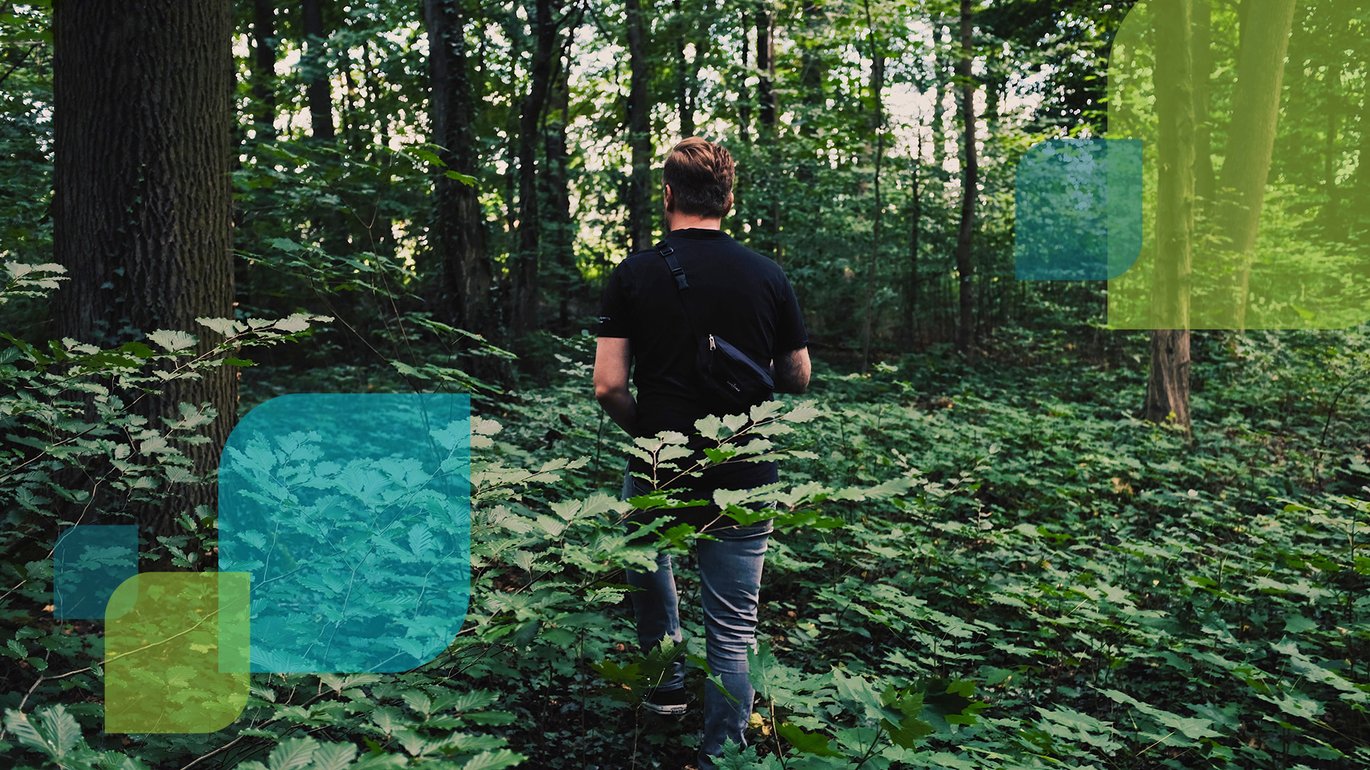Feeling stressed, distracted, or out of sorts? Read this blog to learn how connecting with nature can help. Forest bathing, food meditation, or just taking a walk in the park — learn what a nature break is and how it helps you feel better.

You are not alone if you are feeling a little out of sorts these days. There are many remedies for feeling isolated or stressed and one is taking a nature break.
What is a nature break?
A nature break is when you spend time using one or more of your senses to experience nature. It can be outside or indoors, a short respite or a get-away lasting longer. It can be as simple as stepping outside and taking a deep breath of fresh air.
Nature: The physical world, landscape, plants, and animals, existing independently of human activities

Studies have revealed with positive effects of using one or more of your senses when taking a nature break:
- Seeing nature
- Reduces anxiety and stress, lowers heart rate, increases ability to concentrate
- Can inspire a sense of awe
- Listening in nature
- Relieves stress, anxiety, agitation
- Increases pleasure
- Smelling
- Blossoming plants increase calmness, alertness, and mood
- Pleasant odors can increase desire to help others
- Tasting what nature produces
-
- Produces feelings of enjoyment, satisfaction, and desire
- Feeling
- Petting animals reduces blood pressure and increases relaxation
- Children in “hands-on” forest schools enjoy improved confidence, social skills, language, concentration, and physical skills
Basics for communing in nature
While the Association of Nature & Forest Therapy has trained guides to help people commune with nature, you can connect with nature using your own innate sensibilities. Here are a few basics you can try.
- Set your intention to be present. Leave behind distractions such as electronic devices.
- Be open to a fresh experience and slow down.
- Direct your attention to your senses and follow where they lead you, without expectation. Be easy on yourself.
- You might choose to find a quiet place to sit as a way to fully engage with your senses. Notice what you can hear and see, notice what you feel.
- Give yourself the grace of ample time.
Options for a nature break both inside and outside
1. Forest bathing (shinrin-yoku)

Forest bathing is the Japanese practice of immersing oneself in a forest, using one’s five senses to take in the forest atmosphere. The Japanese have acknowledged the need for exposure to nature because of people’s busy, stressed lives and have studied the effects of Shinrin-yoku extensively. Scientists have found that after time in a forest, the subjects’ pulse rate and cortisol level decreased while parasympathetic response (that is, a relaxing response) increased as compared to subjects that walked in an urban setting.
"When I am among the trees... they give off such hints of gladness. I would almost say that they save me, daily." — Mary Oliver
Engaging your senses in a natural setting is beneficial, and when you choose to be in a forest, you receive even more benefit from the ambient air. Plants emit phytoncides — volatile organic compounds — some of which boost immune system functioning. You can also benefit from the negative air ions from forest aerosols, which have been shown to decrease depression and may have anti-tumor effects by increasing natural killer cell activity.
2. Seeing nature
Just looking at photographs of greenery and water features or out a window at nature can have a positive effect on your body. Seeing images and scenes of nature encourages a positive mood.
3. Communing with indoor living things
Is there a pet that brings you joy? Or maybe a plant that enchants you? With intention and attention, take time to notice the pattern in, say, a leaf. Are there long veins in parallel or do the veins branch out from the middle? What colors do you see? Is it smooth, fuzzy, prickly, or does it have some other texture?
"When we taste with attention, even the simplest foods provide a universe of sensory experience." — Jon Kabat-Zinn
4. Tasting
Take a little time for food meditation. You can choose any food, and you may try out the “Raisin Meditation.” This meditation has been used in Jon Kabat-Zinn’s Mindfulness-Based Stress Reduction program. Which may bring you more awareness of what you are thinking and how your body is feeling — both can help people have a greater sense of their control of choices.
5. Visualizing
Simply imagining nature can decrease stress. You can relax by using your imagination. It’s as easy as getting comfortable, closing your eyes, and imagining yourself in a place that feels good to you — a place where you have been or some paradise you have dreamed of. Envision whatever soothes you: you might envision birds singing or gentle waves lapping on a shore. Perhaps a friendly animal comes to greet you. Take a few minutes to enjoy your place.

Nature break stories
Getting grounded. A flight attendant shared that after landing from a long flight, she would go barefoot on the soil (a lot easier when she was landing in Hawaii!).
Processing feelings. Throwing negative thoughts into the ocean helped a woman through her relationship problems.
Meaning. Hiking in the mountains gave a man a new direction for his life and a felt sense of connection to something greater.
“Standing here in the jungle, I feel part of a larger, calmer identity; I feel a profound sense of being at home, a sort of companionship with the earth.” — Oliver Sacks
What would you like to try?
Maybe you love the color of the sunrise, the trickling of a creek, or the sight of a hawk soaring overhead. Maybe it’s the way your dog bolts out of the house to take a run. What inspires you to take a nature break?
Sign up
Join our email list to receive the latest open positions, Vera Careers news, and more.





